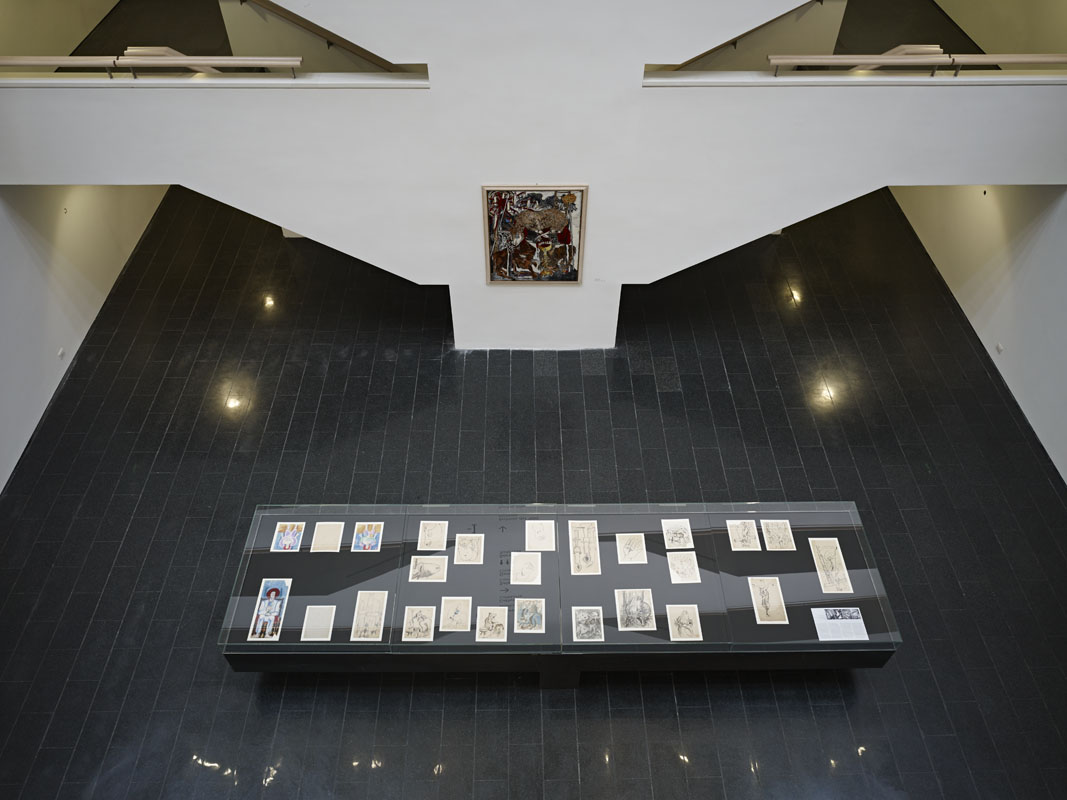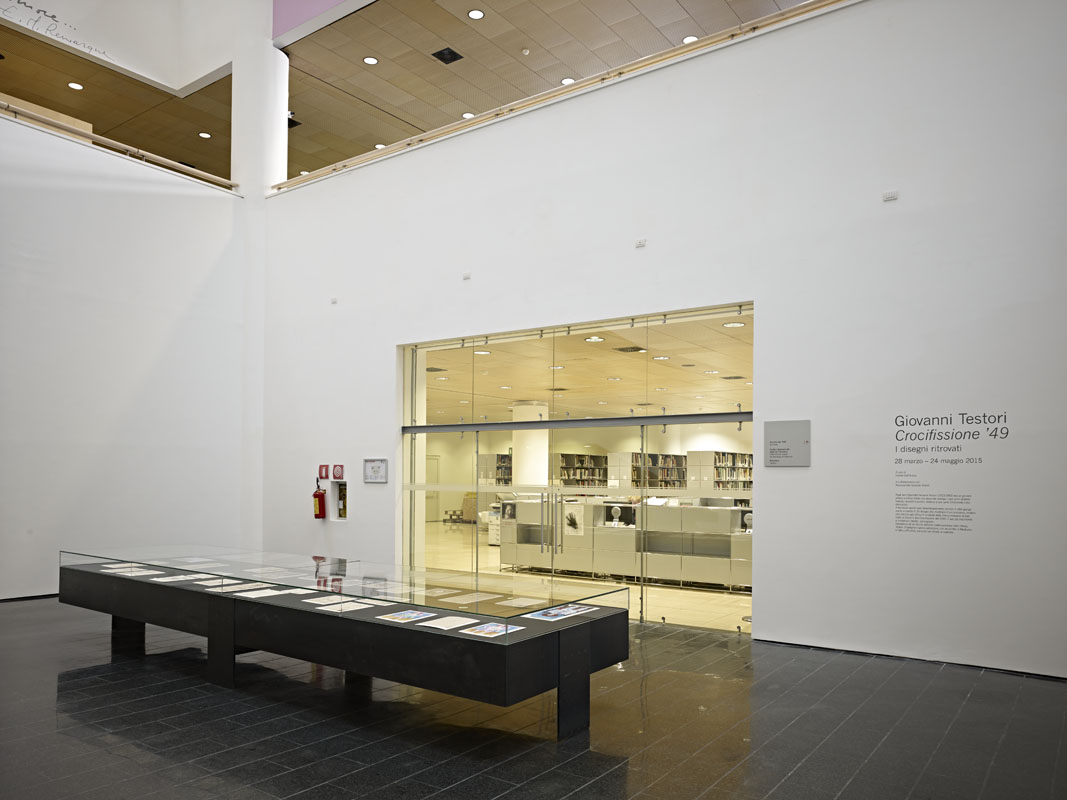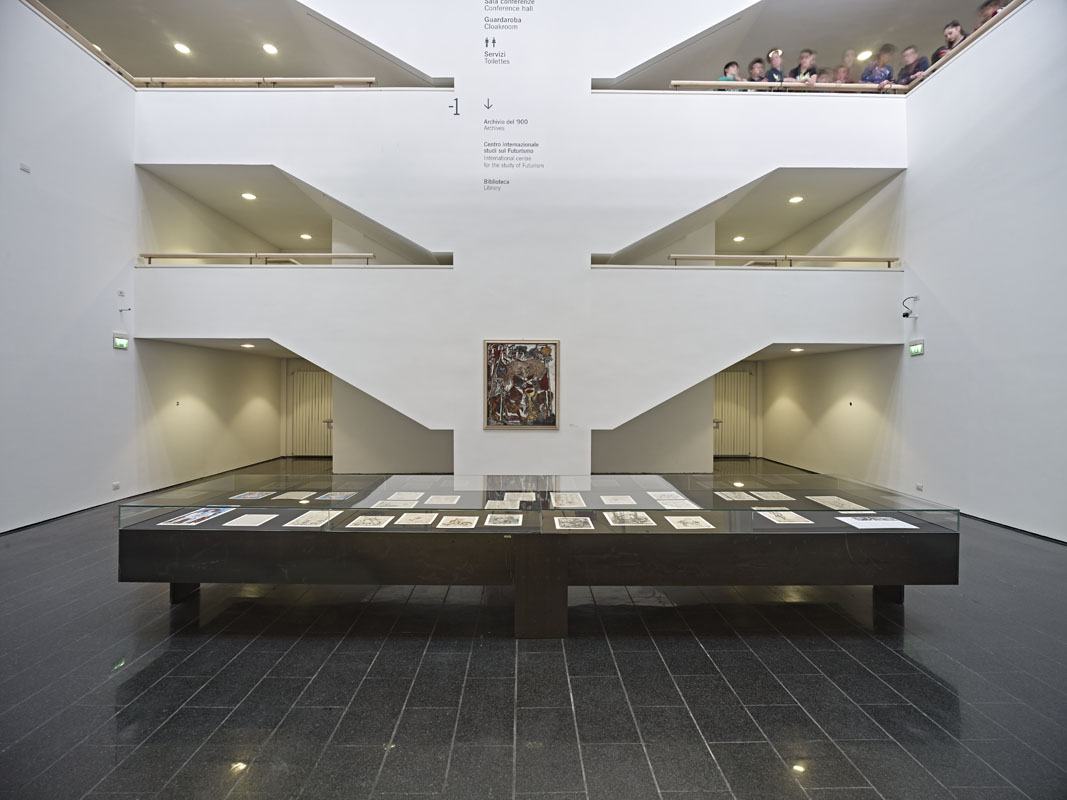CROCIFISSIONE ‘49. I DISEGNI RITROVATI
Giovanni Testori
Curated by Davide Dall’Ombra
In collaboration with Associazione Giovanni Testori
Mart – Museo di arte moderna e contemporanea di Trento e Rovereto
28 March – 24 May 2015
THE SAVED PAINTING
Giuseppe Frangi
In 1950 Giovanni Testori was 27 years old. His profile was already that of an intellectual who was difficult to classify, due to the multiplicity of fields in which he was involved. But in that 1950 one of these spheres disappeared, and it was certainly one of his most beloved: painting.
Testori, hurt by the incomprehension and consequent covering up of the frescoes in the church of San Carlo al Corso in Milan, had decided to end his experience as a painter. In a gesture typical of his temperament, he destroyed the canvases he had painted up to that time and which remained in his studio in Via Santa Marta. Practically only those he had sold or given away were saved. And this Crocifissione (Crucifixion) was saved, which Testori always kept with him until the end.
It was clear that the Crocifissione, represented by symbols and dated 1949, was something very important to him. Now the discovery by Davide Dall’Ombra of an important series of preparatory drawings for that painting in a Roman collection reinforces that clue. Thanks to these drawings it is possible to follow the development of Testori’s thought and ideas around a work that is certainly the most important and the most ambitious of his painting season, marked by a critical commitment to the return of contemporary art to churches.
On the one hand, Testori showed to be fully in line with the novelties of figurative art in those years, committed to the personal reworking of Picasso’s innovations, but on the other hand he confirmed his extraordinary originality, breaking away from the models and enacting a “staging” of surprising originality both stylistic and iconographic. An articulated and fascinating nucleus that required an adequate contextualisation, capable of considering his critical engagement with his “realist” companions and the medieval sources underlying the iconographic choices made by Testori […].
THE EXHIBITION
The Mart Museum in Rovereto, one of the most important and innovative contemporary art museums in Italy, hosted “Crocifissione ‘49. I disegni ritrovati”, an exhibition that presented the public with an unexpected Testori. A Testori before “I segreti di Milano”, before Luchino Visconti and Robero Longhi: a very young Testori painter.
In the 1940s, Giovanni Testori, even before being a writer, was in fact known as a painter, an associate of the Milanese school of “Corrente”, a fellow traveller of Ennio Morlotti, Bruno Cassinari and Renato Guttuso. Even his interventions as a militant critic were dictated by the need to find, first and foremost for himself, a viable way forward for Italian realism which, recognising Cèzanne as its father, was willing to go beyond Picasso’s dazzling vision.
These years of experimentation, between 1948 and 1949, were illuminated by the important discovery of 26 drawings, displayed in the exhibition, which illustrate Testori’s creative process that led to the San Carlo frescoes and one of the rare works that escaped destruction: the Crocifissione (Crucifixion) signed and dated 1949, the most important painting by Giovanni Testori, which brought this phase of his artistic life to a close following the disappointment at the fading of the frescoes.
Unique in Testori’s pictorial production, this group of papers allows us to follow his creative process step by step, at a time of great formal and iconographic research.



